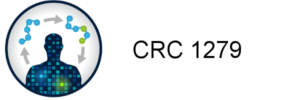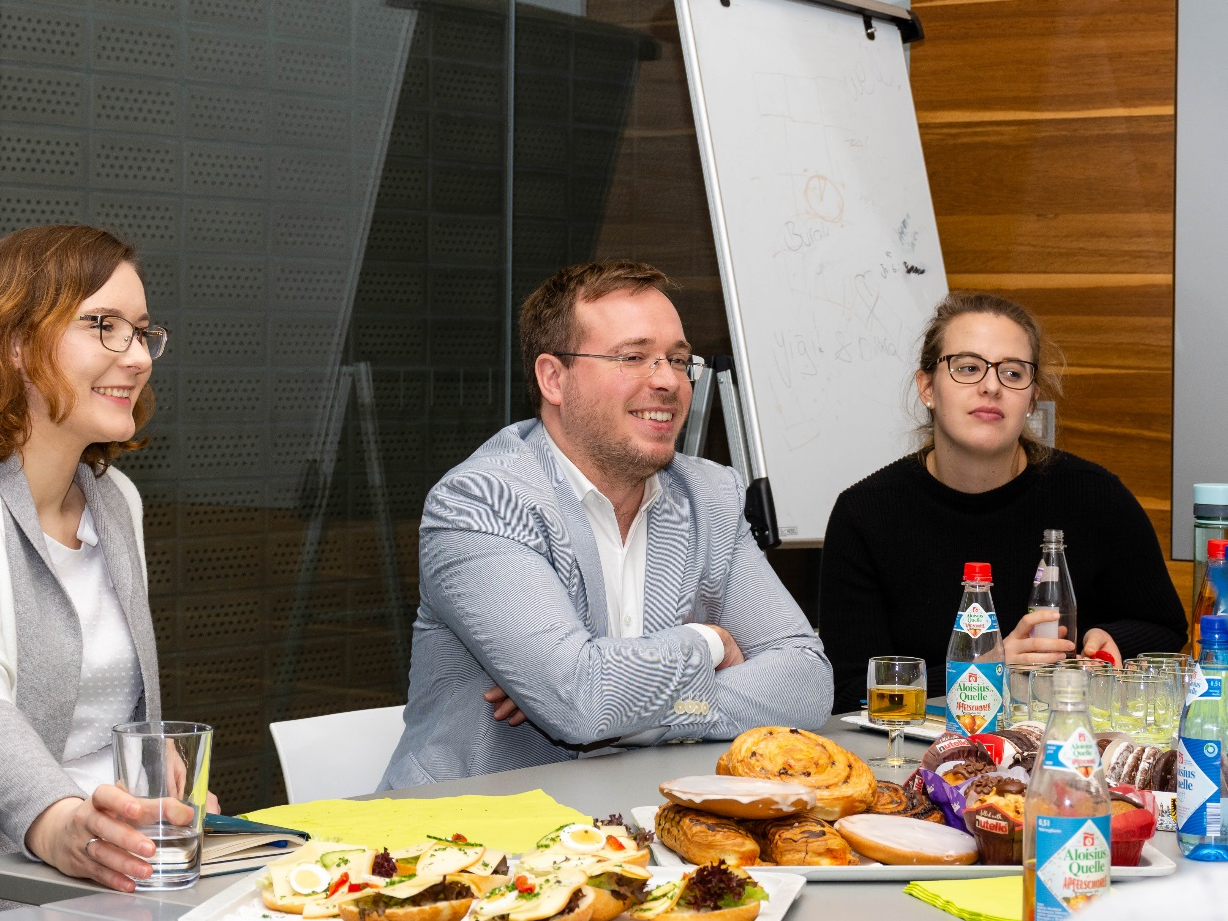About dream teams: Scientist couple explores Host-Microbe interactions
On Tuesday 11th of December, Prof. Hinterleitner and Prof. Meisel from the University of Pittsburgh gave a lunch seminar addressing the topics: “Woman in academia: Transitioning from a postdoc to group leader/professor” as well as “Careers in science as a couple”. Afterwards, both presented their (independent, but collaborative) projects.
“People recommended me: just get a baby and let Reinhard do his career. This really bothered me.” Marlies Meisel carries a lot of research spirit and energy. Like her partner, she got appointed as an assistant professor in the Department of Immunology at the University of Pittsburgh just a few months ago. “We applied independently”, the couple emphasizes. Meisel adds: “It’s really important to show that both of you are able to get grants and publications. People tend to think that women are the weaker part.” By listening to the young and successful couple, one feels they are equal. A perfect example for a couple in science: supporting each other and moving forward together without losing individuality. Both of them studied in Vienna and did their PhD in Innsbruck where they first met. From then on, their CVs converged. However, being a couple and closely collaborating does not imply that they always agree. Marlies Meisel and Reinhard Hinterleitner clearly expressed their individual and sometimes opposite scientific points of view. The Lunch symposium was a great opportunity for postdocs and students to ask questions regarding career, funding, gender equality, family compatibility as well as (lab)life in the US. The answer to the question whether they would like to go back to Germany or Austria was quite astonishing: despite of their numerous publications in high impact journals (e.g. 1,2) and excellent references, finding an appropriate position and achieve funding in these countries is very difficult. Therefore, they decided to embark on a career in the US. However, in general, they would like to come back one day if attractive environments for science and life are available.
In the subsequent talks, Marlies Meisel presented her work on the association of gut microbiota with complex diseases like myeloid cancer. She works with a mouse model lacking the de-methylation enzyme TET2 and analyzes extrinsic and intrinsic factors that lead to the development of disease in these mice1. Central goals for her new lab are to investigate the impact of the gut microbiota on liver fibrosis/cancer and to define the impact of the tumor-microbiome on tumor intrinsic and systemic immunity.
“All disease begins in the gut”, Reinhard Hinterleitner initiated his talk. This important observation was already made by Hippocrates around 2500 years ago. It is well known that the gut microbiota influences immunity and intestinal microbes can trigger disease, e.g. celiac disease. This is an autoimmune-like disorder driven by gluten, a dietary protein. However, little is known about the crosstalk between gut microbiota, dietary antigens like gluten and the mucosal immune system of the gut. In his new lab, Reinhard Hinterleitner investigates and elucidate these pathways. He already showed a link between viral infections and the development of loss of oral tolerance and celiac diseases2.
Referring to the question whether there is competition between the two labs, Meisel laughs and denies. “We split organs. I take the liver and he gets the gut.” By the way- both labs are currently looking for talented postdocs and PhD students!
You can follow the labs on social media:
Twitter: Reinhard Interleitner (@RH_Laboratory); Marlies Meisel (@MeiselLab)
Instagram: @meiselhinterleitnerlab
Homepage: https://www.meisel-hinterleitner-lab.com/
Publications:
1Meisel, Marlies, et al. "Microbial signals drive pre-leukaemic myeloproliferation in a Tet2-deficient host." Nature 557.7706 (2018): 580.
2Bouziat, Romain, Hinterleitner, Reinhard et al. "Reovirus infection triggers inflammatory responses to dietary antigens and development of celiac disease." Science 356.6333 (2017): 44-50.



